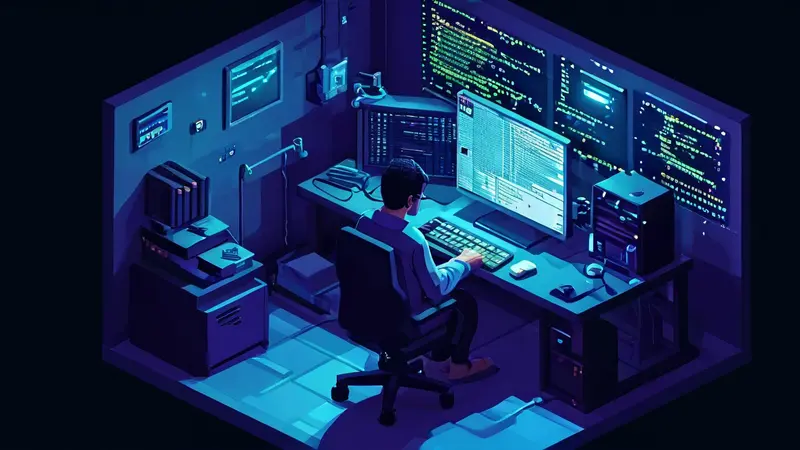The editor of Downcodes will take you to understand the software that is indispensable in the robot development process! Robot research and development is not a simple assembly. It requires powerful software support to achieve complex control, perception and intelligent functions. This article will introduce in detail several types of software that play a key role in robot development and answer related questions to help you better understand the world of robot software development.

Software developed for robots mainly includes: 1. Operating system software, such as ROS (Robot Operating System) and RTLinux; 2. Simulation and modeling software, such as Gazebo and Simulink; 3. Programming and development software, such as Python and C++; 4 , Image processing and machine vision software, such as OpenCV and PCL; 5. Machine learning and artificial intelligence software, such as TensorFlow and PyTorch. These software play a vital role in robot research and development, helping developers design and test robots, perform fault diagnosis and repair, and carry out intelligent upgrades of robots.
1. Operating system software
The operating system software is the operating platform of the robot and is responsible for managing and controlling the robot's hardware and software resources. ROS (Robot Operating System) is the most commonly used robot operating system software, providing a simple way to write and run robot applications. ROS provides developers with a complete set of development frameworks and tools, including communication, hardware abstraction, device drivers, library functions, visualization, messaging, package management, etc. RTLinux is a real-time operating system that adds real-time functions to Linux and is suitable for robot applications that require high-precision control and response.
2. Simulation and modeling software
Simulation and modeling software is used to create virtual models and environments of robots for testing and validation without involving the physical robot. Gazebo is an open source robot simulation software that can simulate complex indoor and outdoor environments. It provides a physics engine, high-quality 3D graphics, convenient model editing and model library and other functions. Simulink is a graphics-based model design and simulation software that can be used to design complex control systems and algorithms.
3. Programming and development software
Programming and development software are the main tools for realizing robot functions. Python is a simple and easy-to-understand programming language suitable for beginners and rapid development. C++ is an efficient programming language suitable for developing robot applications with high performance requirements. Both languages are widely used in ROS.
4. Image processing and machine vision software
Image processing and machine vision software are used to process the visual information of robots and are key to realizing functions such as robot navigation, target recognition, and target tracking. OpenCV is an open source image processing library that provides a wealth of image processing and machine vision algorithms. PCL (Point Cloud Library) is an open source point cloud processing library that can process 3D images and point cloud data.
5. Machine learning and artificial intelligence software
Machine learning and artificial intelligence software are used to make robots intelligent so that they can learn and adapt to their environment. TensorFlow is an open source machine learning framework that provides a rich set of machine learning and deep learning algorithms. PyTorch is a dynamic machine learning framework suitable for research and rapid development.
What is software developed for robotics?
Robotics software is a specific program that is used to design, develop and control robots. This software usually includes various functions such as robot motion control, perception and environment recognition, task planning and execution, etc.
What are the functions of software developed by robots?
The software developed by robots has a variety of functions, such as:
Motion control: This software allows the robot to achieve precise motion control, including movement, rotation, and grabbing. Perception and environment recognition: Software can help robots perceive the surrounding environment, obtain data through sensors, and perform analysis and identification. Task planning and execution: The software can plan and execute the robot's tasks and make decisions based on different situations and goals. Human-computer interaction: The software developed by robots can realize interaction with humans, including speech recognition, speech synthesis, image processing and other functions.How to choose software for robot development?
When choosing software for robot development, you need to consider the following factors:
Functional requirements: According to the specific application scenarios and task requirements of the robot, select software with corresponding functions. Scalability: The software should have good scalability and be able to meet possible future demand changes and functional expansion. Development tools and support: Choose software that offers comprehensive development tools and technical support to quickly develop and debug robotics applications. Cost and Licensing: Consider the cost and licensing of software and choose software that fits your budget and business model.(The above answers are for reference only. The specific choice of software for robot development needs to be comprehensively considered based on actual needs.)
I hope this interpretation by the editor of Downcodes can help you have a deeper understanding of robot development software. Only by mastering these software tools can you take a step further in the field of robotics!